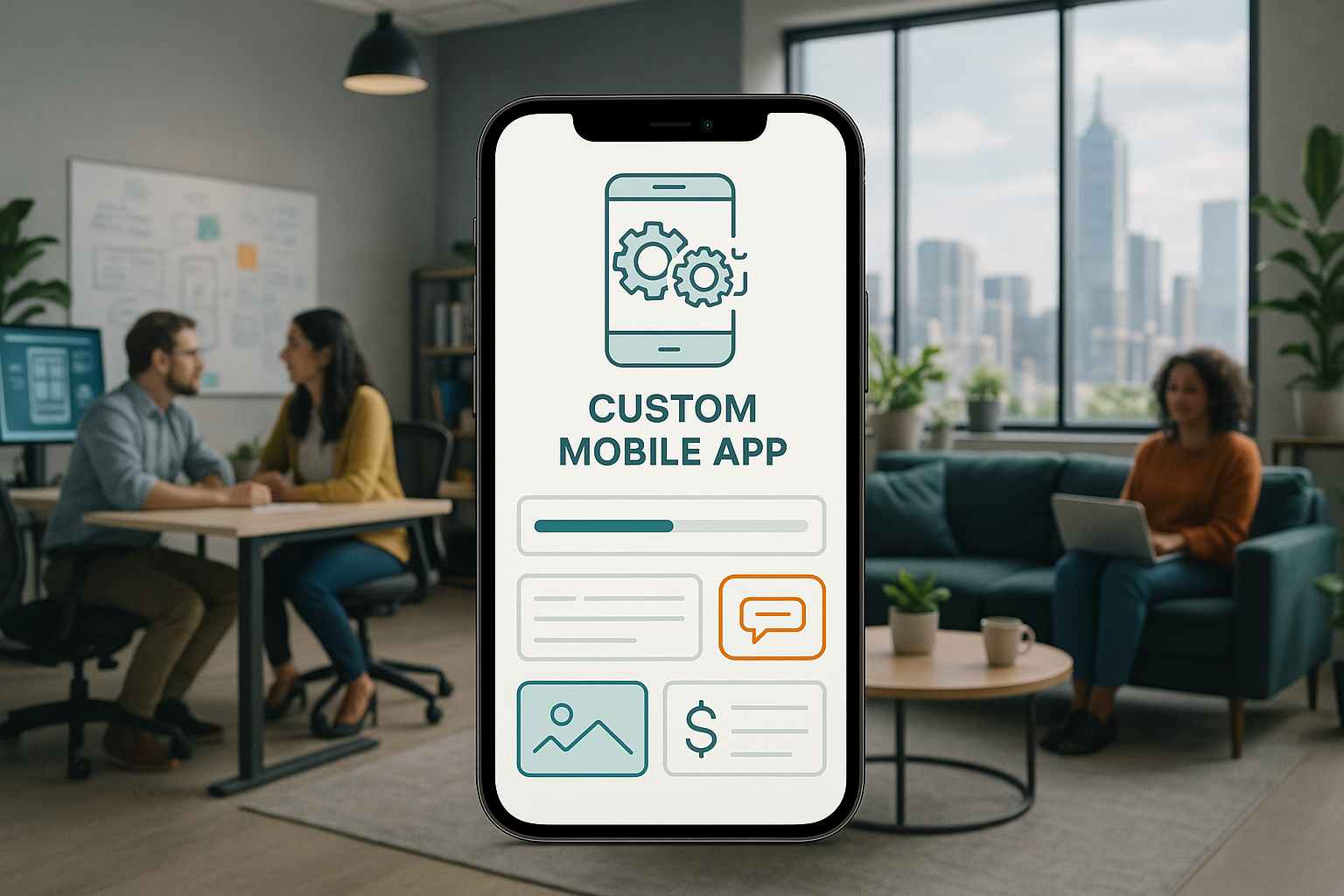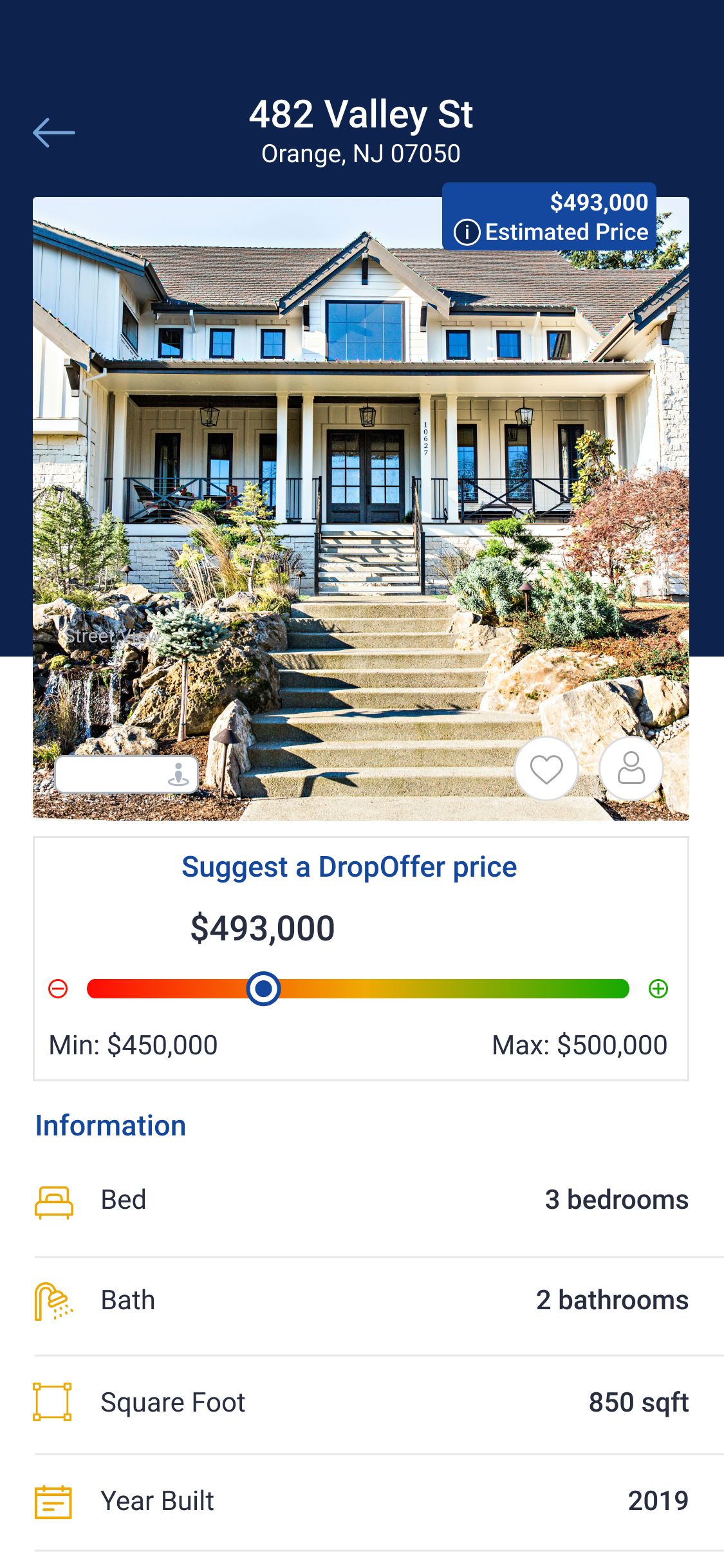Introduction
The digital marketplace has revolutionized commerce, creating platforms like Amazon, Etsy, and Airbnb that have become household names. The allure of building the next great multivendor marketplace is undeniable; it presents a powerful business model with immense potential for scalability and revenue. However, the path from concept to a thriving platform is fraught with technical complexity, strategic challenges, and significant investment. Developing a multivendor marketplace app is not merely about creating an e-commerce store; it involves building a complex ecosystem that serves three distinct user groups—platform administrators, vendors, and customers—each with unique needs and workflows.
Attempting to build such a sophisticated application in-house often leads to unforeseen hurdles, from spiraling costs and extended timelines to critical security vulnerabilities and an inability to scale. The architectural intricacies, including multi-party payment processing, vendor inventory management, and robust commission engines, demand a level of specialized expertise that most internal teams simply do not possess.
This article serves as a comprehensive guide to navigating the world of custom multivendor marketplace app development. We will delve into what defines these platforms, explore the profound difficulties of in-house development, and articulate why a custom approach is superior to off-the-shelf solutions. Furthermore, we will break down the different types of marketplaces, provide realistic cost estimates, and introduce the top development companies that can turn your vision into a reality.
As a top US AI-powered app development firm with over two decades of experience launching more than 100 successful applications, we at MetaCTO understand this landscape intimately. We have helped countless entrepreneurs and established businesses build, grow, and monetize sophisticated mobile applications. Throughout this guide, we will share insights gleaned from our experience to help you make informed decisions and position your marketplace for long-term success.
What is a Multivendor Marketplace App?
At its core, a multivendor marketplace app is a digital platform that enables multiple third-party sellers (vendors) to list and sell their products or services to a large, shared customer base. Unlike a standard single-vendor e-commerce app where one business sells its own inventory, a marketplace acts as an intermediary, facilitating transactions and providing the infrastructure for commerce to occur. The platform owner generates revenue primarily through commissions on sales, listing fees, subscription plans for vendors, or promotional services.
This model creates a symbiotic ecosystem where each participant derives significant value:
- For Customers: Marketplaces offer a one-stop shop with a vast selection of products or services from various sellers. This leads to competitive pricing, greater choice, and the convenience of a single checkout process.
- For Vendors: Sellers gain access to a much larger audience than they could reach on their own, leveraging the platform’s established traffic and marketing efforts. They benefit from a ready-made technical infrastructure, including payment processing and a storefront, without the need to build and maintain their own e-commerce site.
- For the Platform Owner: The owner can scale the business rapidly by adding new vendors and product categories without managing physical inventory. This asset-light model allows for a focus on platform growth, user experience, and community building.
A well-architected multivendor marketplace application is composed of several critical components, each tailored to its user group:
- Vendor Dashboard: A dedicated portal for sellers to manage their business. This includes functionalities for product listing, inventory management, order processing, shipping configuration, sales analytics, and communication with customers.
- Customer-Facing App: The primary interface where customers browse products, use advanced search and filtering, read reviews, add items to a cart from multiple vendors, and complete a unified purchase.
- Admin Panel: The central nervous system for the platform owner. This powerful dashboard allows for vendor onboarding and verification, commission management, dispute resolution, content moderation, user management, and comprehensive analytics on the platform’s health and performance.
The success of a marketplace hinges on its ability to seamlessly integrate these distinct experiences into a cohesive and trustworthy platform.
Reasons that it is difficult to develop a Multivendor Marketplace app in house
While the prospect of maintaining full control and potentially saving on agency fees can make in-house development seem appealing, the reality is often far more challenging. Multivendor marketplaces are among the most complex software applications to build correctly. An in-house team, even a talented one, can quickly become overwhelmed by the sheer scope and specialized knowledge required.
Intricate Technical Architecture
The backend of a marketplace is a labyrinth of interconnected systems. You are not just building a product catalog; you are building a system that must handle thousands of individual catalogs, each with its own inventory, pricing, and options. Key architectural challenges include:
- Database Schema: Designing a database that can efficiently manage relationships between vendors, products, customers, orders, payments, commissions, and reviews without becoming slow and unwieldy as data grows is a monumental task.
- Commission Logic: Marketplaces can have varied and complex commission structures. Some charge a flat percentage, others have tiered rates based on sales volume, and some combine this with subscription fees or fixed listing costs. Implementing a flexible, accurate, and automated commission engine is non-trivial.
- Order Splitting: When a customer purchases items from multiple vendors in a single transaction, the system must split the order, notify each vendor correctly, calculate separate shipping costs, and process payments accordingly. This “split-cart” functionality is a common point of failure in amateur builds.
Secure and Compliant Payment Processing
Handling payments is perhaps the most critical and high-risk area. A simple Stripe integration is not enough. The platform must be able to accept a single payment from a customer and then distribute the funds to multiple vendors, minus the platform’s commission. This requires a sophisticated payment-splitting solution from providers like Stripe Connect or Braintree Marketplace. Implementing these requires deep expertise to ensure funds are routed correctly and securely. Furthermore, handling financial data means strict adherence to standards like PCI DSS (Payment Card Industry Data Security Standard) is mandatory, a compliance burden that in-house teams are rarely equipped to manage.
Scalability and Performance Bottlenecks
A marketplace that works perfectly with 10 vendors and 100 users can grind to a halt with 1,000 vendors and 100,000 users. In-house projects often fail to plan for scale from day one. This results in costly and time-consuming re-architecting down the line. An experienced agency builds for future growth, utilizing scalable cloud infrastructure, load balancing, and optimized database queries to ensure the app remains fast and responsive under heavy traffic. The goal is to build a system that can handle growth without constant crises.
The Challenge of Feature Parity and User Experience
A modern marketplace needs a rich feature set to compete. This includes advanced search and filtering, vendor and product reviews, a messaging system for buyer-seller communication, dispute resolution workflows, and robust analytics dashboards for vendors. Each of these features is a significant project in its own right. An in-house team may struggle to deliver this functionality, leading to a subpar user experience that fails to build trust and retain users.
Hiring a professional development agency brings measurable results. For example, when KFC hired an agency for their mobile application, they saw a 22% increase in conversion rates and a 60% increase in repeat purchases. The app achieved a 4.5 average rating on both the Play Store and App Store, a direct reflection of high user satisfaction born from professional execution. While a food delivery app is different from a marketplace, these metrics underscore the powerful impact that expert development has on business outcomes—outcomes that are difficult to achieve with an inexperienced team.
Why custom app development for Multivendor Marketplace
In the quest to launch a marketplace, many founders are tempted by off-the-shelf software or template-based solutions. While these can offer a lower initial cost and faster time to market, they impose severe limitations that ultimately stifle growth and prevent the platform from reaching its full potential. A custom development approach, while a more significant upfront investment, is the only way to build a truly defensible, scalable, and unique marketplace business.
Tailor-Made for Your Unique Business Model
No two marketplaces are identical. Your differentiation may lie in your niche audience, your unique commission structure, your vendor verification process, or a specialized feature that solves a specific industry problem. Off-the-shelf solutions force you to conform your business model to their pre-built features. Custom development, by contrast, allows you to build the software around your business model. You have complete freedom to design workflows, features, and user experiences that perfectly align with your vision and create a competitive advantage. This includes integrating essential e-commerce features like payment processing and inventory management in a way that is tailored to your specific operational needs.
Unmatched Scalability and Performance
Custom-built applications are designed with your growth trajectory in mind. We build platforms on robust, scalable architecture from day one, ensuring that your app can handle increasing traffic, users, and transactions without performance degradation. You are not constrained by the technical debt or architectural limitations of a third-party platform. As your business evolves, your custom application can evolve with it, allowing you to add new features, expand into new markets, and integrate new technologies seamlessly.
A Superior and Differentiated User Experience (UX)
In a competitive digital landscape, user experience is paramount. A generic, template-based design makes your platform look and feel like countless others, eroding brand identity and failing to engage users. Custom UI/UX design allows you to create a unique, intuitive, and memorable experience for both buyers and sellers. This attention to detail fosters trust, encourages repeat business, and transforms users into brand advocates. At MetaCTO, our process begins with in-depth product design and discovery to ensure every screen and interaction is thoughtfully crafted to drive user engagement and conversion.
Full Ownership and Long-Term Asset Value
When you use a SaaS marketplace builder, you are essentially renting the technology. You are subject to their pricing changes, feature limitations, and platform policies. With a custom-built app, you own the source code and the intellectual property. This is a valuable long-term asset for your company. It gives you the ultimate control and flexibility to pivot, sell the business, or raise capital without being tied to a third-party provider. This ownership is crucial for building a sustainable and valuable enterprise.
Different types of Multivendor Marketplace apps
The multivendor marketplace model is incredibly versatile and can be adapted to suit a wide range of industries and transaction types. Understanding these categories can help you refine your niche and strategic focus.
1. By Target Audience
The relationship between the buyers and sellers on your platform is a fundamental differentiator.
- B2C (Business-to-Consumer): This is the most common model, where businesses sell products or services directly to individual consumers. Think of Amazon for products, or DoorDash for services.
- B2B (Business-to-Business): These platforms facilitate transactions between two businesses. Examples include Alibaba, which connects manufacturers with wholesalers, or industry-specific marketplaces for sourcing raw materials or professional services.
- P2P (Peer-to-Peer) or C2C (Consumer-to-Consumer): In this model, individuals transact with one another. eBay (for goods), Airbnb (for accommodations), and Turo (for car rentals) are classic examples. These platforms often require robust features for trust-building, such as user verification and secure communication channels.
2. By Market Focus
The breadth of your offerings defines whether you are a vertical or horizontal player.
- Horizontal Marketplace: This type of marketplace offers a wide variety of products or services across many different categories, aiming to be a one-stop shop for everything. Amazon is the quintessential example. While the potential audience is massive, competition is fierce.
- Vertical Marketplace: This platform focuses on a specific niche or industry. Examples include Etsy (handmade and vintage goods), StockX (sneakers and streetwear), or Houzz (home renovation and design). Vertical marketplaces succeed by offering deep expertise, a curated selection, and a community-focused experience that horizontal players cannot replicate.
3. By Business Model
The core transaction on your platform determines its classification.
- Product Marketplace: These platforms focus on the sale of physical or digital goods. The key challenges involve inventory management, shipping logistics, and returns processing.
- Service Marketplace: These marketplaces connect customers with professionals who provide a service. Examples include Upwork (freelancers), Thumbtack (local professionals), and Doctor on Demand (telehealth). The primary focus is on scheduling, provider credentialing, and quality control.
- Rental Marketplace: These platforms facilitate the temporary use of an asset for a fee. Airbnb (short-term rentals) and Getaround (car sharing) are prominent examples. These require features for availability calendars, booking management, and often, insurance integration.
Cost estimate for developing a Multivendor Marketplace app
Determining the exact cost of a custom multivendor marketplace app without a detailed scope is impossible, as the final price is a function of complexity, feature set, and desired platforms (iOS, Android, web). However, we can provide realistic budget ranges based on our extensive experience building such applications. It is crucial to view this not as a cost, but as an investment in a significant business asset.
Phase 1: Product Discovery & Design (UI/UX)
- Estimated Cost: $15,000 – $40,000
- Timeline: 2-6 weeks This foundational phase is critical to success. It involves market research, defining the core user flows for buyers, sellers, and admins, creating wireframes, and producing high-fidelity visual designs. A thorough discovery process de-risks the project by ensuring that what gets built is aligned with both user needs and business goals, preventing costly changes later in the development cycle.
Phase 2: MVP (Minimum Viable Product) Development
- Estimated Cost: $75,000 – $250,000+
- Timeline: 3-6 months The goal of an MVP is to launch the core functionality of the marketplace quickly to test the market and gather user feedback. An MVP for a marketplace is still a complex undertaking and typically includes:
- User registration and profiles (for both buyers and sellers)
- Vendor dashboards for product/service listing and basic order management
- Search, filtering, and product detail pages
- A functional shopping cart and a unified checkout process
- Integration with a payment gateway (e.g., Stripe Connect)
- A basic review and rating system
- An admin panel for managing users and vendors
Our Rapid MVP Development service is designed to get your core product to market efficiently, focusing on the features that deliver the most value upfront.
Phase 3: Full-Featured Application & Scaling
- Estimated Cost: $250,000 – $500,000+
- Timeline: Ongoing After a successful MVP launch, development continues by adding more advanced features based on user feedback and strategic priorities. These features significantly increase complexity and cost, but also create a more defensible and feature-rich platform. Examples include:
- AI-powered recommendation engines and personalized search
- Advanced analytics and reporting dashboards for vendors
- Multiple payment gateway options and international currency support
- Integrated shipping carrier APIs for automated label generation
- In-app messaging and dispute resolution centers
- Marketing automation tools and promotional features
Ongoing Costs
Beyond the initial development, remember to budget for ongoing expenses, including server hosting, third-party API fees, regular maintenance, security updates, and a dedicated budget for app growth and marketing.
Top Multivendor Marketplace app development companies
Choosing the right development partner is the single most important decision you will make. You need a team with proven experience in building complex, scalable marketplaces. Here are some of the top firms in the industry.
1. MetaCTO
As a US-based firm with over 20 years of experience, we specialize in transforming ambitious ideas into market-leading mobile applications. We don’t just write code; we partner with our clients to build, grow, and monetize their platforms. Our 100+ successful app launches and 5.0-star rating on Clutch are a testament to our commitment to excellence.
What sets us apart is our deep expertise in integrating advanced technologies like artificial intelligence. Modern marketplaces thrive on data, and our AI development capabilities allow us to build sophisticated features like personalized recommendation engines, dynamic pricing models, and AI-powered fraud detection that give our clients a decisive competitive edge. Our work on the Parrot Club, a P2P language learning marketplace, demonstrates our ability to build and scale two-sided platforms, achieving 1,000 paid users in the first month.
Our process is end-to-end, beginning with strategic product discovery and continuing through mobile app development, launch, and ongoing growth support. We have earned the trust of major brands like Liverpool FC and Carlyle by consistently delivering high-quality, scalable solutions that drive real business results.
2. AppDupe
AppDupe is known for its clone scripts and white-label solutions, which can provide a faster entry point into the market. They offer pre-built solutions for various marketplace models like Uber and Airbnb. This approach is best suited for clients looking for a template-based solution with some customization, rather than a fully custom, from-scratch build.
3. CedCommerce
CedCommerce provides a range of e-commerce solutions and extensions, primarily for existing platforms like Magento, Shopify, and WooCommerce. They specialize in creating multivendor marketplace plugins that can transform a standard e-commerce site into a marketplace. This is a viable option for businesses already operating on one of these platforms who wish to expand their model.
4. Vrinsoft
Vrinsoft is a mobile and web development company with experience in building e-commerce and marketplace applications. They offer custom development services across various technologies. They have a portfolio that includes a variety of business applications, showcasing their ability to handle projects of different scales and complexities.
Conclusion
Building a successful multivendor marketplace is a marathon, not a sprint. It requires a clear vision, a solid business strategy, and most importantly, a world-class technical partner. We have explored the intricate nature of these platforms, the significant risks of attempting an in-house build, and the profound strategic advantages of custom development. From defining your niche and understanding the costs to choosing the right development firm, every decision is a critical step toward creating a scalable, profitable, and defensible business.
The journey is complex, but the rewards—creating a vibrant ecosystem that empowers sellers and delights customers—are immense. A custom-built platform is more than just an app; it is a valuable, long-term asset that provides the foundation for sustainable growth and market leadership.
Ready to turn your vision for a multivendor marketplace into a market-leading application? Don’t navigate the complexities alone. Talk with a Multivendor Marketplace app development expert at MetaCTO today to get a clear product strategy roadmap and build an app that drives growth and revenue from day one.






